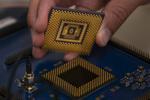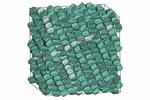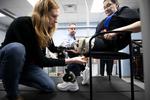Other

“Self-erasing chips developed at the University of Michigan could help stop counterfeit electronics or provide alerts if sensitive shipments are tampered with. They rely on a new material that temporarily stores energy, changing the color of the light it emits …

“Like biological fat reserves store energy in animals, a new rechargeable zinc battery integrates into the structure of a robot to provide much more energy, a team led by the University of Michigan has shown. This approach to increasing capacity …

“In a step closer to skyscrapers that serve as power sources, a team led by University of Michigan researchers has set a new efficiency record for color-neutral, transparent solar cells. The team achieved 8.1% efficiency and 43.3% transparency …

“University of Michigan engineers create centimeter-sized robots capable of more than ever before Origami principles can unlock the potential of the smallest robots, enhancing speed, agility and control in machines no more than a centimeter in size. University of Michigan …

“n an effort to improve large touchscreens, LED light panels and window-mounted infrared solar cells, researchers at the University of Michigan have made plastic conductive while also making it more transparent. They provide a recipe to help other researchers find …

“Most programs in use today have to be completely rewritten at a very low level to reap the benefits of hardware acceleration. This system demonstrates how to make that translation automatic. A new technique developed by researchers at the University …

“The first programmable memristor computer—not just a memristor array operated through an external computer—has been developed at the University of Michigan. It could lead to the processing of artificial intelligence directly on small, energy-constrained devices such as smartphones …

“In work that upends materials design, researchers have demonstrated with computer simulations that they can design a crystal and work backward to the particle shape that will self-assemble to create it. It could lead to a new class of materials …

“A new open-source, artificially intelligent prosthetic leg designed by researchers at the University of Michigan and Shirley Ryan AbilityLab is now available to the scientific community. The leg’s free-to-copy design and programming are intended to improve the quality of …

“A new computer processor architecture developed at the University of Michigan could usher in a future where computers proactively defend against threats, rendering the current electronic security model of bugs and patches obsolete. Called MORPHEUS, the chip blocks potential attacks …
